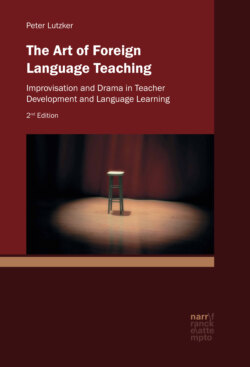Читать книгу The Art of Foreign Language Teaching - Peter Lutzker - Страница 36
На сайте Литреса книга снята с продажи.
2.4 Affecting Teacher Change in In-Service Courses
ОглавлениеUntil the 1990s, the most common approach to teacher change was based on an empirical-rational strategy in which change was seen as a linear process. In this framework change could be induced by having teachers introduced to a new way of thinking or behaviour based on research, theory, or both: after being told what they had to do differently and having it demonstrated to them, teachers were expected to implement such changes in their classrooms.165 The fact that this strategy did not prove to be successful gradually led educators to try to develop approaches based on a more flexible understanding of developmental processes.
S. Sarason considers one of the fundamental problems in affecting teacher change to be the external and directive nature of the pressures to institute it:
If anything is incontrovertible in the literature on educational reform, it is how difficult it is to get teachers to change their accustomed beliefs and practices. (…) Their resistance to change should occasion no surprise. None of us likes to change. All of us in the face of change find that we like our “symptoms,” that the pain associated with change appears greater than the pain the symptoms engender. But in the case of educational reform the stimulus for change comes far less from teachers than from “higher-ups” or other external forces, and teachers regard that pressure as an unwarranted criticism of what they have been doing.166
There has in recent years been an increased recognition of the fact that in affecting teacher change, a teacher’s personal reflections in the context of a dialogue occurring in an atmosphere of trust, can play a decisive role. This emphasis on personal reflection as a basis of affecting change has received substantial reinforcement through Donald Schön’s highly influential concept of the reflective practitioner.167 Virginia Richardson sees this change in strategy from an empirical-rational to a normative-reeducative approach in teacher development as occurring within a broader societal development:
This change strategy is also, however, part of a larger movement toward the phenomenological and hermeneutic study of how individuals make sense of and contribute to the situations in which they live and work.168
There have been a number of studies in the last decades in which a biographical perspective has been introduced to ascertain how teachers can best learn to make sense of their respective situations and to develop within them. Michael Huberman’s career development study of secondary teachers presents a biographical perspective in which a series of stages within a teacher’s career are described. He has established six distinct stages of a teacher’s professional life: survival and discovery; stabilization; experimentation and activism; taking stock – self-doubts; serenity, consternation; and disengagement. Among his most significant and relevant findings was the recognition that the simple movement from one stage to the next, most notably towards the end of a professional career, does not ensure teacher development.169
Due to an increasing amount of case study research, a more differentiated understanding of the complex phenomena of teacher change has emerged.170 Through case study narratives, it has become apparent that although teachers tend to view their own careers as a process of gradual evolution, there are usually a few decisive experiences, situations and people that have profound influences on each teacher’s development. Such incidents invariably have a highly personal character and a similar incident will by no means have a comparable effect on someone else.171 At the same time, it has become clear that what is viewed as the difficult and complex task of affecting substantive teacher change is connected not only to the strong presence of personal habits, beliefs and often anxieties, but is inextricably tied to the nature and atmosphere of schools themselves. Sarason writes,
There is little or nothing in the organization and culture of schools that spurs a teacher to regard change and development as necessary, personally and intellectually rewarding, and safe. I emphasize safe because in the culture of the school the teacher who seeks help or coaching from others is one whose competence is called into question. The teacher is expected to handle all problems that arise in the classroom, and it is a sign of weakness if it becomes apparent that that is not the case.172 (italics in original)
He sees the effects of a system that is deeply inimical to encouraging teacher change as constituting one of the decisive causes of the failures of schools:
What happens over time to teachers when year in and year out they teach the same thing to the same kind of audiences? What are the sources internal and external, to give them the sense of growth, to cause them willingly to enlarge or alter their role and repertoire, to prevent the feeling that they have settled into a safe comfortable routine? The answer is: precious little. (…) In all my writing about schools and their personnel I have emphasized what I consider to be a glimpse of the obvious. If the conditions for productive learning do not exist for teachers, they cannot create and sustain these conditions for students.173 (italics in original)
